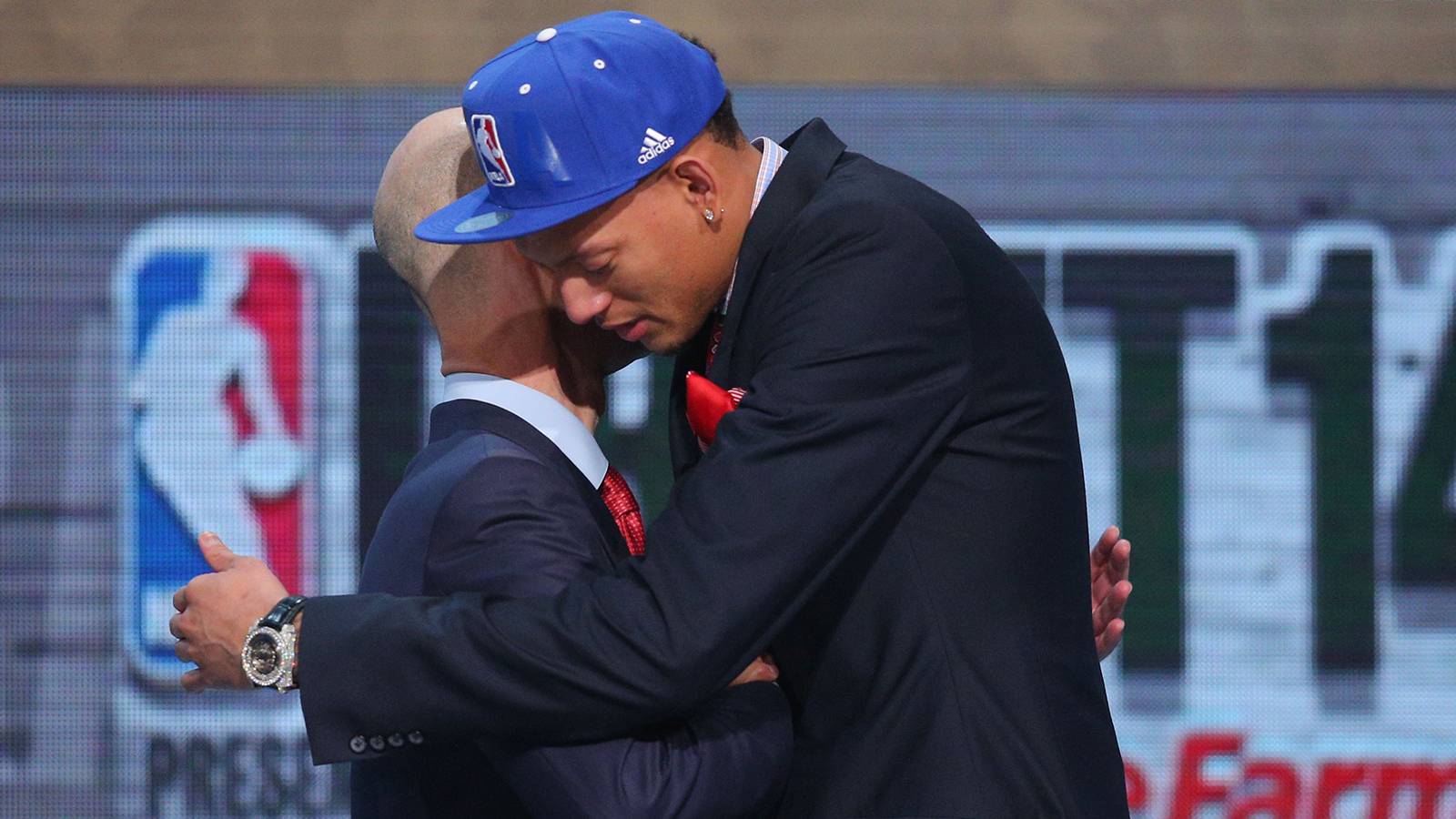Meet Isaiah Austin
Isaiah Austin is an inspiration to us all, and particularly to patients with Marfans Syndrome.

Isaiah was a star basketball player at Baylor University in Texas. Last year, he completed an all-star performance as the center on the men’s basketball team. All he had ever wanted to do and worked tirelessly was to play professional basketball in the NBA. He had the natural athletic talent and physical skills to play in the NBA. His mother said that during his very first competitive basketball game as a child he was dribbling the ball between his legs and excelling above his peers.
But he didn’t just possess the talent, he also had the work ethic. He worked as hard as he could and trained as intensely as he could and was 100% committed to becoming an elite basketball player.
One week prior to the 2014 NBA draft, Isaiah participated in the NBA combine. Only players with potential to be drafted in the first round of the NBA draft are invited to this combine. At the combine, players are put through multiple skill stations and measured and assessed from every angle.
Medical Concerns
It was during that NBA pre-draft combine that some concerns were raised about Isaiah’s health. At the beginning of the 2013-2014 Baylor Men’s Basketball season, Isaiah had announced that he was playing with one eye. He had lost vision in one eye several years ago but still performed at an all-star caliber on the court. He had adapted and overcome this disability and was able to shoot the basketball with precision all the while playing with one eye.

However, there was more to they story that unfolded as Isaiah went through the NBA combine process.
At the combine, his arm wingspan measured 7 feet 4 inches. Isaiah was 7 feet 1 inches tall. This massive wingspan was certainly useful on the court, but represented a medical anomaly. Next, during his physical exam, he was observed to have stretch marks on his upper chest and thighs. He was also noted to have a partially caved-in breastbone (called pectus excavatum). Finally, he had an abnormal heartbeat.
Despite being in the best shape of his life, and having excelled at all of the skill stations at the NBA combine, it was clear that something was wrong medically.
The Diagnosis
At the recommendation of the supervising physician, he underwent some additional tests. He had a special heart test and a blood test. The blood sample was used to test for a genetic marker for Marfan Syndrome. The blood test came back positive for the gene for Marfan Syndrome.
He was informed of the results the night before the NBA draft. He was also told by specialists that due to his diagnosis, he could never play competitive basketball again.
Can you imagine the magnitude of this information? Here he was preparing to be drafted in the first round of the NBA draft, had worked his entire life to play professional basketball and his only life dream was to be in the NBA and he found out that this wasn’t going to be possible. His dream was instantly cut-short.
Drafted by the NBA
ESPN broke the story the day before the draft. It was big news. Despite being devastated, Isaiah and his family sat down with ESPN reporter Holly Rowe and calmly discussed his diagnosis and fact that he couldn’t play in the NBA due to medical reasons. Remember, he felt perfectly healthy and was in the best shape of his life.
Adam Silver, NBA Commissioner, was moved (as we all were) by Isaiah’s story. He and the NBA developed a plan. They decided to call Isaiah’s name at the NBA draft (watched by millions of fans world wide) so that Isaiah could complete his dream of being drafted in the first round of the NBA draft. Only, it was the NBA itself, not a particular team, which was drafting him. He was being drafted by the NBA because of his heroic story and dedication to the game of basketball.

When Mr. Silver announced that the “next pick in the 2014 NBA draft is Isaiah Austin and he was being drafted by the NBA itself, Isaiah’s lifelong dream was realized. Not perhaps as he ultimately intended, but he did get drafted in the first round of the NBA draft. When he walked to the stage, he got a standing ovation because everyone was aware of his story. He was greeted by Commissioner Silber and given a hat with an NBA emblem on it. Isaiah wept and we all wept.
As Commissioner Silver hugged Isaiah, he whispered to him that he will always have a place in the NBA.
Watch the ESPN story for yourself:
After being drafted and sharing his story to the public, Isaiah dedicated himself to awareness about Marfan Syndrome. He started a non-profit foundation to make this happen and now travels the country educating players, parents, coaches and anyone else who will listen about Marfan Syndrome.
Marfan Syndrome
Marfan Syndrome is a genetic disorder of connective tissue. A defective gene for fibrillin-1 causes a mutation which prevents this important connective tissue component from working correctly. Patients with Marfan Syndrome have a number of medical conditions, most significantly is that they are prone to developing aortic aneurysms at a young age and can develop spontaneous aortic dissections.
The aortic problems that these individuals develop are a result of the deficiency of collagen in their aorta combined with the fact that the aorta must expand and contract with each heartbeat for a lifetime. The repeated stress of normal blood pressure, along with the stress of physical exertion and periods of stress, come together to cause the aorta to prematurely grow, tear and eventually rupture. If undetected, these individuals can die suddenly from rupture of the aorta. There are no warning signs and the aortic disease can develop slowly overtime without any symptoms.
This is why awareness about this inherited disease is so important. Education people about this disease and encouraging people with certain physical characteristics to get screened can save lives.
They also develop eye problems and unusually shaped breast bones. There is no cure for this disorder and most patients die from aortic rupture or dissection. These patients need close medical supervision and when identified early, can have their aorta surgically replaced in stages when it deteriorates.
Isaiah Austin’s non-profit foundation can be found here. I encourage you to make a donation to his foundation to help support his mission.
In addition, he works closely with the Marfan Foundation. You can click here for more information.
I encourage you to learn more about this disease and pass this message along to anyone else who you think might benefit from this important information.
Was this post informative?
Subscribe to my newsletter to learn more about the aorta, its diseases, and how to treat them.
Comments
Share your thoughts below — I try to get back to as many comments as possible.